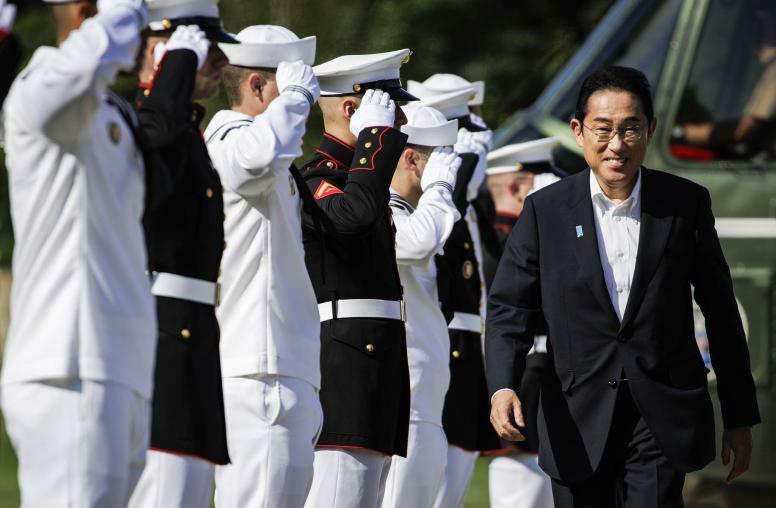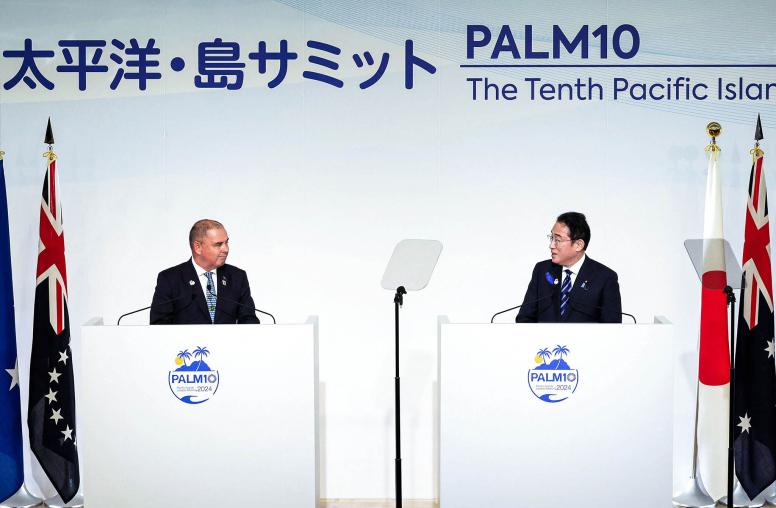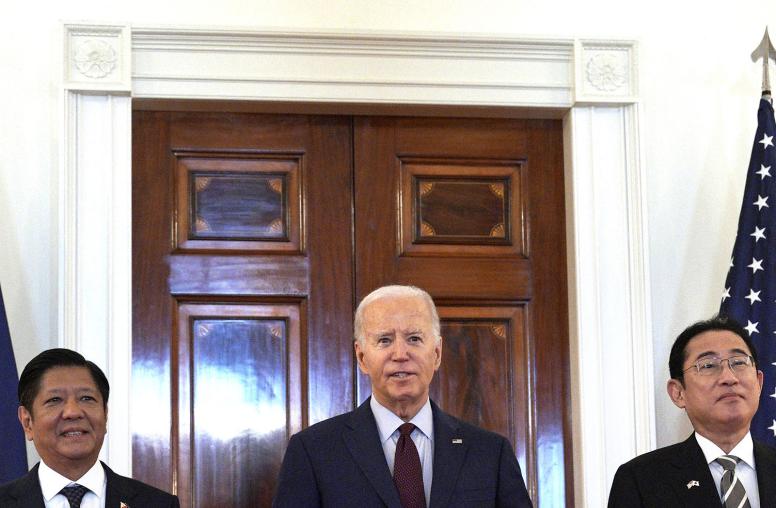Beyond the Courts: History-Related Lawsuits and South Korea-Japan Relations
Korean victims of colonial-era abuse are using lawsuits to reshape how we think about historical injustice.
While the relationship between South Korea and Japan is fraught with a number of historical and territorial disputes, the current cycle of tensions focuses our attention on lawsuits related to the colonial era. Most notably, bilateral ties soured after 2018, when two landmark rulings from the South Korean Supreme Court ordered Japanese firms to compensate Korean plaintiffs for their wartime forced labor.

Japanese firms refused to comply with the rulings, and Korean courts moved to seize — and possibly liquidate — the firms’ local assets to compensate the victims. This set off a cascade of diplomatic, economic and legal consequences that turned colonial-era forced labor into one of the main problems between the South Korean and Japanese governments.
The 2018 rulings proved that the courts are an important arena of contestation over historical facts and memory. But their impact on broader South Korea-Japan relations also demonstrates that history-based lawsuits shouldn’t be viewed through a purely legal lens.
For claimants, such history-related lawsuits were always about more than narrow legal victories. In fact, Korean plaintiffs have won only a handful of the hundred-plus lawsuits they’ve filed in Japanese, U.S. and Korean courts over the past three decades.
Nonetheless, litigation has helped to mobilize fellow victims, boost claimants’ credibility, uncover documentation about past abuses, attract publicity, exert pressure on other branches of the South Korean government and rebuild victims’ dignity. As a result, history-related lawsuits have continued — and they are gradually transforming the issue of historical injustice, the stakeholders involved and public knowledge about historical claims — especially in South Korea.
The ‘Radiating Effects’ of Litigation
Courts’ proceedings and rulings can send subtle messages and have “radiating effects.” They may redefine issues in ways that shift public opinion, help forge new social values or norms, empower some groups over others or influence political negotiations in other forums. This can be true even in defeat, where unsuccessful lawsuits are still "winning by losing" as they help build social movements or transform societal perceptions.
Similarly, to understand the impact of history-related litigation in East Asia, we must look beyond the 2018 Supreme Court rulings. They concern only a fraction of the lawsuits that Koreans have filed over the years. Just considering forced labor, more than 65 cases involving some 1,100 plaintiffs are pending before Korean courts.
As purely legal instruments, such litigation strategies make little sense given that they are costly, time-consuming and often end in defeat. Furthermore, structural disincentives, such as state-mandated limits on the number of lawyers and the size of rewards, had previously kept litigation rates low in general until the past two decades.
But litigation continues as a strategy because activists seeking to redress historical injustices have found it productive beyond the courtroom. There are three main “radiating” effects of the lawsuits: Litigation processes can validate victims’ status and voice as stakeholders, provide language for framing victims’ claims in ways that mobilize others and resonate with international human rights, and supply more evidence about past abuses and contemporary denialist attitudes.
Understanding these radiating effects can help policymakers design solutions to historical disputes that are more likely to gain traction. It illuminates the domestic constraints facing the current Yoon administration in South Korea, which has urged the court to consider the diplomatic consequences of liquidating assets. The lawsuits’ radiating effects are also relevant for Japanese and U.S. policymakers, highlighting the importance of victim involvement, procedural legitimacy and fact-finding in any process that addresses past wrongs.
External Validation of Victims’ Voices
Through litigation, Korean victims, as well as the lawyers and civic groups that support them, have solidified their credibility and their right to a seat at the table in negotiations over historical disputes.
Even before any court rulings, victims gain external validation whenever courts recognize their standing and agree to hear their lawsuits. Although this falls short of legally validating their claims about the Japanese government’s and firms’ liability, it does mark victims as legitimate voices on history issues.
On one level, the courts’ external validation has made it easier for journalists to assess the victims’ credibility among many voices in the public sphere. Victims’ visibility has thus increased, especially in South Korean media. The rhythm of judicial proceedings also regularly brings historical injustices to the public’s attention. Plaintiffs’ lawyers capitalize on court dates by organizing press conferences and rallies for supporters near the courthouse, with plaintiffs holding portraits of deceased victims for poignant photo-ops.
Additionally, victims use their standing to authoritatively interpret judicial signals. After a Korean court ruled against 85 forced laborers suing 16 Japanese firms in 2021, the plaintiffs’ side publicly condemned the ruling as “going against the nation.” Gaining standing within the legal system has given plaintiffs and supporting organizations, even in relatively small numbers, an outsized voice in Korean media.
On another level, gaining standing as plaintiffs bolsters victims’ demands for a seat at the table in decision-making. It reinforces the global shift from protecting state sovereignty toward valuing human rights in questions of historical injustice. Individuals and NGOs increasingly influence reparations questions that used to be primarily handled between governments. In the victims’ eyes, past attempts to resolve historical disputes lacked legitimacy because they were reached through “undemocratic” means.
The Moon Jae-in administration’s review of the oral “comfort women” agreement echoed this criticism, saying the 2015 deal did not sufficiently reflect “a victims-centered approach, which has become the [international] norm when it comes to the human rights of women in time of war.” Victims have gained standing not only in court, but also in official negotiations.
It appears that Korean policymakers are more cognizant than their Japanese counterparts of the importance of giving the process legitimacy by involving victims.
For instance, the South Korean government included plaintiffs and their lawyers on an advisory council this past summer, alongside experts, business representatives and former officials — though the plaintiffs’ representatives later boycotted the council when the government proposed using Korean funds to compensate victims without Japanese firms’ participation, which Tokyo resists.
The Korean Foreign Ministry also held public forums to listen “to the opinions of the victims and other people from all walks of life in order to seek reasonable solutions on current problems with Japan to improve relations.” Litigation bolstered the victims’ authority to speak on history issues and seek a seat at the table.
A Connection to Broader Human Rights Efforts
Litigation has provided language for framing victims’ claims in ways that mobilize others and connect with international human rights concerns. To file their lawsuits, plaintiffs articulated their grievances in legal terms, tapping into the universal language of law and rights.
This process helps other victims to label their own experiences with similar language and begin to assign blame. While this process can muddy distinctions among individual experiences and entrench a victim-mentality, it also empowers activists to find support at home and abroad.
Korean litigants have helped frame past Japanese actions as human rights violations in the public sphere. In the case of “comfort women,” victims and their supporters were able to relabel the “comfort stations” as historical cases of human trafficking, sexual violence in armed conflict and “enforced sexual slavery,” terminology that was echoed by the United Nations as early as 1996, as well as by the Obama administration.
Korean comfort women’s testimonies also contributed to efforts to include sexual slavery, rape, enforced pregnancies, sterilization and prostitution as war crimes and crimes against humanity in the 1998 Rome Statute.
Scholars have noted that domestic courts are not just “norm-takers” but also contribute to the construction and development of international human rights norms. For example, as courts hear Koreans’ claims about serious human rights violations in the past, they help define the limits of sovereign immunity for foreign governments.
And by linking history-related litigation to broader human rights conversations, litigants have expanded who is watching Korea and Japan as they address historical injustices. Research indicates that an issue’s resonance with broader audiences is more likely if those who frame the issue have credibility, which courts’ recognition of litigants’ standing can provide.
Furthermore, framing historical wrongs as human rights violations or crimes against humanity links them to frames that already have a high degree of salience and are thus likely to resonate with audiences. When past sufferings are framed as human rights abuses, they may be amplified internationally, such as when the U.N. Human Rights Committee recently called again for Japan to fully investigate, prosecute and provide remedies for past human rights violations against the “comfort women.”
Evidence and Knowledge Production
One function of courts is to receive and officially examine evidence, including documents and oral testimony. For this process, litigants collect evidence and package it persuasively — often resulting in the recovery of long-lost or unknown documents. In the 1980s, for example, a Japanese high school history teacher was given a 45-page document, listing the names of Korean girls who were mobilized to work in a Japanese aircraft factory during World War II. In addition to such documents, survivors have added first-hand accounts by testifying in court and publicly about their experiences. As a result, there are burgeoning numbers of oral histories, identified remains and documents from the colonial period being discovered or unveiled.
Litigation not only provides more evidence about both past Korean suffering — it’s been used to garner examples of contemporary denialist attitudes in Japan as well. Korean plaintiffs and their supporters argue that Tokyo’s unwillingness to “respect the rulings and let its companies offer a sincere apology and compensate the victims” in the face of past evidence reflects denialist tendencies. Victims and their supporters leverage such information — both past and present — when arguing their case in the court of public opinion.
Court rulings themselves have also played a fact-finding role, authoritatively interpreting and summarizing accounts of past hardships. As “official records penned by neutral arbiters,” rulings that acknowledge the facts of past suffering, even while finding Japanese firms not liable, contribute to “discursive justice.”
For example, a ruling from the Nagoya High Court detailed how Mitsubishi Heavy Industries had recruited underage girls and then mistreated them. As the lead attorney on a subsequent forced labour lawsuit commented: “At least the fact that the courts acknowledged the plaintiffs’ suffering should be counted a success… [because] it has helped [subsequent] litigation in Korea.” When affirming the forced laborers’ right to claim compensation, the Korean Supreme Court ruling in 2012 likewise detailed their horrific working conditions.
Such fact-finding reinforced other archival initiatives. In 2005, for instance, the Korean government disclosed documents relating to negotiations for the 1965 Basic Treaty, after a court ruling sided with forced laborers seeking their declassification.
Later, a Korean government commission documented that almost 2,000 companies had used Korean laborers, which bolstered litigants’ claims in Korean courts. Korean-Japanese NGO partnerships have also searched for documents and victims’ remains. More recently, the Seoul Metropolitan Government and Seoul National University gathered documentation related to sexual slavery from archives abroad, including the U.S. National Archives and Records Administration.
Litigation can contribute to historians’ work and undermine denialist perspectives by uncovering historical documents and organizing new evidence, like plaintiffs’ testimonies. But courts’ fact-finding should not be equated with history-writing. Judges generally adjudicate facts related to a case’s specific claims, whereas historians take a broader view, ideally analyzing the past with all its nuances.
One risk is that courts’ fact-finding may solidify or widen divergences in Korean and Japanese historical memories, which could impede reconciliation. Unfortunately, defamation lawsuits have already been used against scholars who disagree with dominant historical narratives in Korea and Japan. Courts’ fact-finding should contribute to civil and open-minded scholarship about history rather than replace or curtail it.
Beyond the Courts
Victims and their supporters have leveraged history-related lawsuits to heighten public awareness of historical injustices, augment publicly available evidence about past suffering and shift power balances among stakeholders involved in the issues.
This sort of transparency and awareness is necessary if Japan and South Korea are to come to a lasting resolution for colonial-era injustices. But the more that is uncovered and disseminated about these historical injustices, the more invested the Korean public and international human rights actors become in a just reconciliation.
This creates a tougher domestic context for South Korea’s Yoon administration to navigate as it pursues any reconciliation process with Japan. For any such process to stick, the Yoon administration will need to persuade Korean victims, civil society groups, media outlets and the general public that the process remains valuable even if the initial outcomes — and Japanese responses — do not meet their increasingly ardent views on how to redress historical injustices.
This means centering victims’ views and desires in the process. In November 2022, at the first in-person summit since 2019, the Japanese and Korean leaders agreed to pursue “positive and active cooperation” and continued communication at the leader level to resolve the forced labor issue. But top-down resolutions negotiated among political elites will not be enough, and neither will narrow legal settlements. Victims and their supporters recently criticized the idea of Korean government compensation without Japanese firms’ participation as “downgrading” historical suffering into a mere financial matter. They also warn against “attempting to put things to bed in a way that the world does not hear about it.” History-related lawsuits have made it harder to do so.
Celeste L. Arrington is the Korea Foundation associate professor of political science and international affairs at the George Washington University.



